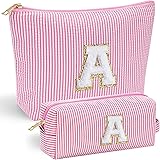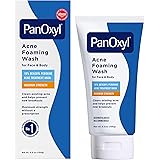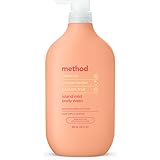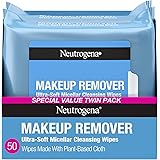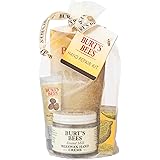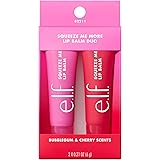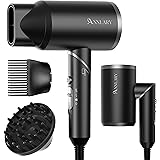Have you ever found yourself in a new country, perhaps stepping into a bustling hair salon, only to realize that the language barrier feels as formidable as a tangled knot? It is a common experience, felt by many, when everyday tasks like getting a haircut become an unexpected challenge. The simple act of asking for “just a trim” can quickly escalate into a comical misunderstanding if you are not equipped with the right vocabulary. Fortunately, a trip to the hairdresser no longer needs to be a daunting linguistic adventure when you are trying to **talk about hair in English**.
The engaging video above beautifully illustrates some key phrases and scenarios you might encounter. It shows that learning to describe hair in English is not merely about memorizing words; it is about understanding a dynamic conversation. This guide is designed to complement that visual lesson, expanding on the nuances of hair vocabulary so that your next salon visit, or even just a casual conversation about hairstyles, can be handled with absolute confidence. Essential terms and expressions are explored in depth, ensuring that you can articulate exactly what is desired for your hair.
Essential English Vocabulary for Haircuts and Styles
When you are preparing for a visit to a salon, a strong command of haircut-related vocabulary is invaluable. Basic requests are often made, such as asking for a simple “trim.” A trim, as demonstrated in the video, refers to cutting off a small amount of hair, usually just to neaten the ends or maintain a current style. It is considered a fundamental request, often indicating a desire for minimal change. Furthermore, a deeper understanding of various popular cuts allows for more precise communication with your stylist.
Understanding Popular Haircut Terms
Many distinct styles are routinely requested at salons, each with its own defining characteristics. For instance, a **pixie crop** is a very short hairstyle, typically cut shorter at the back and sides and slightly longer on the top, creating a chic and often edgy look. This style is frequently chosen by those seeking a low-maintenance yet fashionable appearance. In contrast, a **mullet** is a hairstyle that is famously “business in the front, party in the back,” meaning it is shorter at the front and sides, but long at the back. While once considered a retro style, it periodically makes a comeback in fashion circles, often seen with a modern twist.
Another classic is the **bob**, a cut where the hair is typically cut straight around the head, usually at jaw-level, though variations in length exist. Bobs are often praised for their ability to create volume and a sense of bounce, making them a popular choice for many hair types. A more daring option is the **mohawk**, a hairstyle where both sides of the head are shaved or closely cropped, leaving a strip of significantly longer hair in the center. This bold statement style is commonly associated with punk culture but has been adopted by various subcultures and fashion trends.
For those seeking very short, uniform styles, a **buzz cut** is often requested. This involves shaving the entire head to a very short length using electric clippers, resulting in a minimalist and clean look. It is a no-fuss option, popular for its ease of maintenance and distinct aesthetic. Comparatively, a **short back and sides** refers to a men’s haircut where the hair on the back and sides of the head is cut much shorter than the hair on top. This traditional and versatile cut is favored for its neatness and professional appearance. A modern variation of this is the **fade**, where the hair on the sides and back gradually decreases in length from top to bottom, often blending down to the skin. Fades are highly fashionable and can be customized in numerous ways.
All About Layers and Fringes
When adding dimension and movement to hair, **layers** are frequently incorporated into a cut. Layers involve cutting different sections of hair to varying lengths, which helps to remove weight, add volume, and create shape. If you have had layers in the past, they might eventually become “grown out layers” as your hair lengthens, meaning the distinction between the different lengths becomes less apparent. This natural progression often prompts a return to the salon for reshaping.
A **fringe** (known as **bangs** in American English) refers to the section of hair that falls over the forehead. Many different styles of fringes exist, each offering a unique framing of the face. A **full fringe** covers the entire forehead, creating a solid, bold line. When a fringe starts to grow out, it can reach a length where it sits around the cheekbones, sometimes playfully referred to as a “gringe” (grown-out fringe). Currently, **curtain bangs** are a very popular trend, characterized by a fringe that is parted in the middle and swept to both sides, resembling curtains opening. This style is celebrated for its soft, face-framing effect and its ability to blend seamlessly with various hair lengths.
Exploring Hair Color and Treatments in English
Beyond cutting and styling, altering hair color is another significant aspect of salon services, offering a vast array of possibilities. The terms used to describe these processes are specific and can sometimes be confusing without proper explanation. Understanding them is key to effectively communicating your desired transformation.
The Art of Hair Coloring
The most basic request for altering hair color is to “dye” it. This term broadly covers any process of changing the hair’s natural color to a different shade. However, there are more nuanced methods for achieving specific color effects. To dramatically change hair color, especially from dark to light, the hair might first need to be “stripped” of its natural pigment. This is a chemical process that removes existing color. Following this, “bleach” is often applied to lighten the hair further, preparing it for a new, lighter shade. For example, a common goal after bleaching is to achieve “platinum blonde,” a very light, almost white blonde color that is vibrant and striking.
For more subtle effects, **highlights** are frequently chosen. This involves lightening small sections of hair, usually a few shades lighter than the base color, to add dimension and brightness. Conversely, **lowlights** involve adding darker strands to the hair, creating depth and making the existing color appear richer. These techniques are often used in combination to create a multi-tonal look. More contemporary coloring methods include **dip dye**, where the ends of the hair are colored a contrasting shade, as if dipped in paint. **Ombre** is another popular technique, characterized by a gradient effect where the hair gradually transitions from a darker shade at the roots to a lighter shade towards the ends. A similar but often softer technique is **balayage**, which involves hand-painting highlights onto the hair to create a natural, sun-kissed effect with less noticeable regrowth lines. Each of these terms describes a distinct artistic approach to coloring hair, offering different visual outcomes.
Describing Hair Condition and Versatile Styles
Beyond cuts and colors, being able to describe the condition of your hair and its various styling possibilities is crucial for comprehensive communication. Whether discussing health concerns or exploring temporary looks, specific vocabulary is indispensable when you **talk about hair in English**.
Common Hair Conditions and Concerns
The general health of your hair is often a topic of discussion. For instance, having “healthy hair” means it appears shiny, strong, and well-nourished, indicating good care. On the other hand, a common concern is **split ends**, which occur when the ends of the hair become dry and fray, splitting into two or more sections. These are often a sign that a trim is needed to prevent further damage. Stylists might also discuss **volume**, referring to the fullness and lift of the hair, and **bounce**, which describes its elasticity and springiness. These qualities are often desired, and various cuts and products are used to enhance them.
A World of Styling Possibilities
Longer hair, in particular, offers immense versatility for styling, allowing for many different looks. A **ponytail** is a classic and simple style where hair is gathered and secured at the back of the head. **Plaits**, known as **braids** in American English, involve intertwining three or more strands of hair to create a pattern. There are countless variations of plaits, from simple three-strand braids to intricate French or Dutch braids.
For men with longer hair, a **man bun** is a popular style where the hair is gathered and tied into a bun at the back or top of the head. For those seeking even more creative styles, **space buns** involve creating two buns, often symmetrical, on either side of the head, giving a playful appearance. Similarly, **pigtails** are a classic style where hair is divided into two sections and tied into ponytails on each side of the head, often associated with a youthful look. Additionally, **dreadlocks** are a distinctive hairstyle formed by matting or braiding sections of hair into rope-like strands. These styles represent a mere fraction of the creative ways hair can be worn, each conveying a different personality and aesthetic.
Navigating Your Next Hair Appointment with Confidence
Equipped with this expanded vocabulary, you are now better prepared to navigate your next hair salon appointment or any conversation where you need to **talk about hair in English**. Remember, communication is a two-way street; do not be afraid to ask for clarification if a term is unfamiliar. Whether you are simply requesting a trim or dreaming of a full balayage, these terms provide a solid foundation for clear and effective dialogue. Practice using these words, and soon, discussing your hair will feel as natural as running a comb through it.


